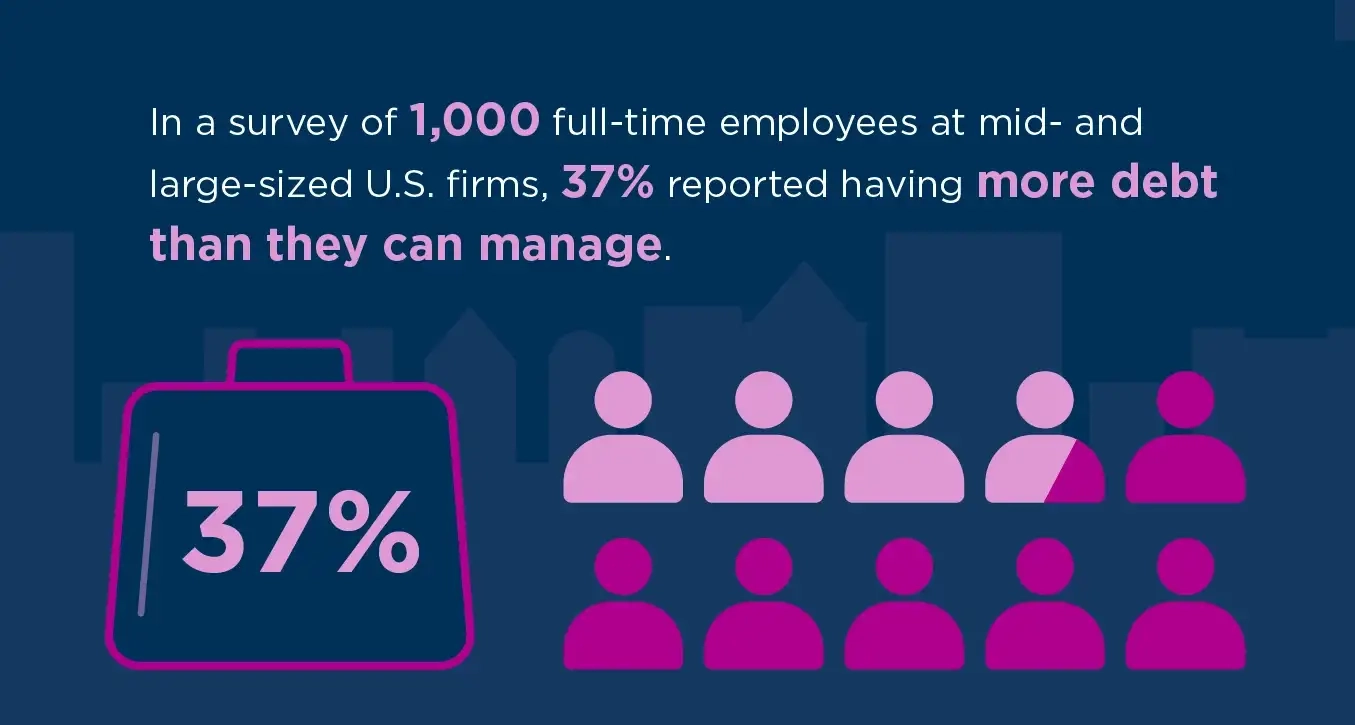Four considerations for employers seeking to roll out credit and debt benefits to boost recruiting, retention, productivity, and employee wellness.

Millennials and Generation Z workers who increasingly dominate the labor force are navigating greater financial challenges than other recent generations.
65 percent of Gen Z respondents to the 2022 TIAA Financial Wellness Survey agreed that employers have a responsibility to help employees improve and maintain their financial wellness.
Simultaneously the vast majority of Gen Z respondents had reservations about using that support due to concerns of hidden costs or fees and not wanting to disclose finances or financial issues to their employer.
So, what to do as an employer interested in realizing the talent, retention, productivity, and wellness gains that financial health benefits yield to organizations and employees alike?
Help your employees manage their debt, by rolling out credit and debt benefits, which typically fall into four categories, debt reduction and consolidation, short-term liquidity, asset building support, and financial guidance.

Source: Financial Health Network
Chances are they are struggling to manage their debt burdens already, using work time to deal with them, stressing out about them, hampering their productivity and your bottom line. In a survey of 1,000 full-time employees at mid- and large-sized U.S. firms, 37% reported having more debt than they can manage. Another study looking at unsecured debt (credit card, medical, and personal loan debt) found that almost two-thirds of employees (63%) have one or more of these types of unsecured debt.
By introducing credit and debt benefits and expert third-party Personal Finance Coaches, employers can overcome trust barriers while supporting the financial health and productivity of employees on an ongoing basis.
Here are four considerations for employers to keep in mind as you prepare to roll out credit and debt benefits, according to a recent brief from the Financial Health Network, which is a valuable resource for any employer exploring how best to maximize employee financial health and productivity.
Keep Equity Front and Center
Employees with high levels of debt and low incomes are less likely to have access to employer-offered debt-related benefits.
Ensure Clear Communication, Confidentiality, and Ease of Access
Nearly half of employees (42%) say they’re not adequately informed about the financial wellness benefits their employer offers. Ease of access, confidentiality, and availability of personalized help are challenges to uptake (that TrustPlus is designed to overcome).
Minimize Costs to Employees
The brief includes examples of fee structures and costs for benefits including financial planning and counseling services, emergency grant funds, and personal loans paid back via payroll.
Regulatory Considerations
Employer contributions to student loans are tax-deductible, up to $5,250 annually. Contributions from employers and employees to emergency grant funds can be tax-deductible.
“Even as employers are expanding their financial wellness offerings, credit- and debt-related benefits remain some of the least frequently offered benefits,” the FHN brief notes. Not for long, as smart businesses increasingly understand the benefits of a financially healthy workforce. The opportunity for leadership is immense. We can help. Schedule a time to speak with Milly about how.






